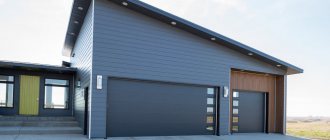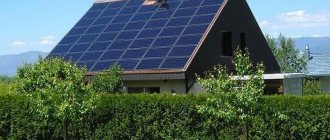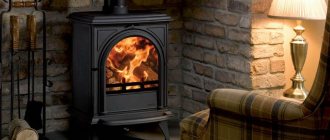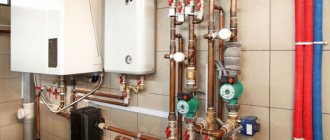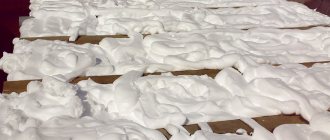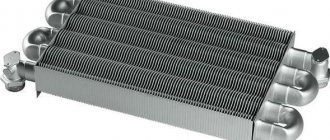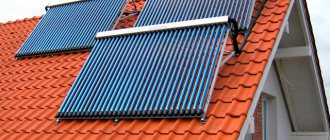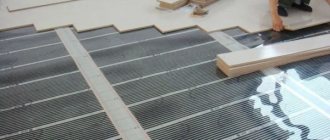Home / Solid fuel boilers
Back
Published: 06/14/2019
Reading time: 4 min
2
2251
Air heating is the oldest heating system for houses in Rus'. The Russian stove is the real ancestor of air-heating boilers (VK) and is still used in rural areas.
The next “historical” modification of the VK is the potbelly stove, which became widely known during the terrible years of the October Revolution and has a more modern version in the form of wood-burning fireplace heaters. In all these examples, the heat from fuel combustion was not used efficiently, and most of it was simply wasted.
Photo source: zaognstrok.ru
Modern long-burning air-heating boilers have given new life to the technology of air heating of buildings. Today, the devices modernized by Russian specialists have become competitive in the boiler industry.
A new generation air-heating boiler appeared in 2002 in the Novosibirsk region. It was invented by heating engineer E.Yu. Zubkevich named Professor Butakov in honor of his relative. Today, this design belongs to the class of energy-efficient devices that reduce the cost of heating a home and emissions into the environment.
- 1 Pros and cons of hot air boilers
- 2 Furnace structure
- 3 Model range of boilers by Professor Butakov
- 4 Operating principle of an air-heating boiler
- 5 Installation standards
Pros and cons of hot air boilers
An air heating system is a complex of interacting devices and devices for transferring thermal energy released during fuel combustion to the surrounding space.
The difference between this method is the absence of water or oil coolant. Heating of the premises is carried out exclusively through natural or forced circulation of heated air.
Modern VCs with a long-burning system ensure constant operation of the equipment without the presence of the owner or operating personnel.
The system no longer requires constant ignitions and stops of furnace equipment, which saves fuel. The absence of batteries and a pipeline system reduces the overall metal intensity of the project and the costs of construction and installation work.
There are other advantages of VK:
- Low cost.
- The efficiency of the system reaches 90%.
- The ability to install an air duct system with subsequent organization of air purification, for example, filling it with silver ions, which is especially useful for allergy sufferers and asthma patients.
- Removing humidity in rooms.
- When outdoor temperatures are elevated, ductwork can be used for the building's air conditioning system.
- The absence of coolant water protects the system from freezing, water hammer and other typical malfunctions of the water network of boilers using coal.
- The boiler allows you to heat the air almost instantly and has simple integration into the ventilation system.
- Low cost of auxiliary equipment operating in an air heating circuit.
Despite its attractiveness, there are also pitfalls associated with air heating:
- Installation of the boiler and air supply system can only be carried out at a facility under construction.
- The need for an additional power source.
- To ensure high efficiency, the boiler is installed indoors with a sufficient level of insulation.
Advantages of air heating
- The efficiency of the heating system reaches ninety percent.
- Using filters, the air can be purified or filled with silver ions; this function is especially useful for people suffering from allergies.
- Excellent for drying the house and eliminating air humidity.
- The ability to reduce the temperature to a minimum to maintain a positive temperature during a long absence of residents of the house.
- When the outside air temperature is elevated, ducts can be used to supply cold air.
- The long-burning system will save on fuel and minimize visits to the boiler room.
- Lack of radiators and pipes in the interior of the house.
- The fan system can be used with a solid fuel boiler to heat other rooms.
Air heating boilers have many benefits, but promotional materials can be a little exaggerated, so it is important to know the full information when choosing a home heating system . Possible pitfalls associated with air heating are:
- Installation of the air duct system and the long-burning boiler itself is carried out only in a house under construction; the layout is also taken into account in the house drawings.
- An additional source of electricity is required.
- For a high level of efficiency, the boiler must be located at home, and the walls must be reliably insulated.
- Boiler ventilation does not ensure complete purification of gas from the air, so it is necessary to ventilate the premises.
- If there are no partitions on the second floor or a small area of the house, ductwork may not be required.
Furnace structure
Today, the most popular among consumers are the air-heating boilers of Professor Butakov, which have a wide range of applications: private residential sector, garages, greenhouses, industrial warehouses and basements.
What units does the boiler consist of? Photo source: paliwadrzewne.pl
The main structural parts of a typical hot water boiler:
- Lower drawer for collecting ash and regulating the amount of air entering the firebox.
- The door with a handle located above the ash pan may have a heat-resistant glass window.
- The combustion chamber and its volume affect the amount of loaded fuel and operating time.
- A cast iron grate is located under the chamber. The sides of the chamber are covered with convection pipes crossing at the top.
- A chimney with a damper to regulate the speed of flue gases and the intensity of draft.
- In some VK models, an additional afterburner chamber with two nozzles for supplying oxygen is located at the top. It burns the gas that is formed during smoldering.
The long-burning air-heating boiler is equipped with all the necessary automation devices, complete with temperature sensors and electronic control units. An automated fuel supply system and an increased volume of the combustion chamber allow the boiler to operate practically without human presence.
Model range of boilers by Professor Butakov
- Gymnasium student, heating and cooking model, weight 49 kg, heat load 8 W, heating area up to 60 m2, cost up to 6800 rubles.
- Student, for private housing construction, weight 57 kg, heat load 9 kW, heating area up to 150 m2, cost up to 13,900 rubles.
- Engineer, for one-story houses and small household premises, weight 75 kg, heat load 15 kW, heating area up to 250 m2, cost up to 17,700 rubles.
- Associate Professor, for non-residential industrial premises, weight 143 kg, heat load 25 kW, allows you to heat an area of up to 500 m2, cost up to 28,000 rubles.
- Professor, for large residential and non-residential buildings, weight 57 kg, heat load 40 kW, heating area up to 1000 m2, cost up to 32,000 rubles.
Operating principle of an air-heating boiler
Air-heating boilers can be made with different design solutions, but their operating principle is the same. In boilers of this type, air is heated from hot surfaces, which ensures continuous circulation of air flows in the room.
External view of the stove.
To effectively heat adjacent rooms, an air duct system is installed. If there are many rooms and the house has a complex, multi-level layout, forced ventilation is used to uniformly distribute the heat flow and overcome friction and length losses.
Modern combustion chambers operate on the principle of pyrolysis - a long process of smoldering firewood with minimal air supply in the combustion chamber, producing both gas and heat. The process takes place in two stages: ignition and gas generation.
When igniting, firewood or briquettes are placed in the firebox on the grate and set on fire, while the gate and ash are left open. After the firewood burns well, they are closed, thereby reducing the amount of air entering the firebox, and it is supplied only through jets.
The efficiency of boilers is ensured by the supply of primary and secondary air. The primary comes from indoors or outdoors. To increase the efficiency of the boiler and reduce heat losses, the air is preheated and only then supplied to the firebox.
Secondary - represents a mixture of air and fuel combustion products. The fuel is not completely burned, so the exhaust gases still contain flammable substances with a high temperature, so their “afterburning” is economically justified and will require additional costs. Secondary air is taken from the top of the flue, and the volume and flow rate are adjusted using a damper manually or automatically, which is impossible to do in the old type of traditional boilers or furnaces.
Self-installation
You can do air heating yourself, which will help you save money. It is best to do this during the construction stage. Installation of an air heating system consists of the following steps:
https://youtube.com/watch?v=QO2mryOkg6E
Carrying out calculations
This is one of the most difficult and lengthy stages, requiring knowledge, skills and careful work. You need to consider several important factors:
- calculate heat loss separately for each room;
- choose the type of air heater and its power depending on the heat loss indicators;
- based on the heater power indicators, calculate the amount of warm air;
- perform an aerodynamic calculation of the entire system;
- calculate the required diameter of the air channels.
Purchase of equipment
You should start by purchasing the most important part - the heat generator. It should be selected based on the size of the heated area and fuel consumption indicators.
It is better to purchase air ducts, tie-ins and throttle valves from a special enterprise that produces ventilation equipment.
Everything else, namely aluminum tape, screws, mounting tape, insulation, etc., can be found on any decent market.
Installation features
During the installation of this heating system, the main air duct is first installed. Usually it is made of galvanized steel, after which it is covered with foil insulation with a thickness of about 3-5 mm.
After this, a system of smaller air ducts is installed, which branch off from the main one. To make the system easily adjustable, a throttle valve must be installed in each supply duct.
At the end of the main air duct, it is better to leave a section 50 cm long, in which there will be no insertion of thin air ducts. This way there will be uniform pressure along the entire length of the device and equal volumes of air will enter the side branches.
All this is followed by the installation of the air heater itself. It provides all mounting holes for additional equipment (filters, air conditioning, air sterilizer) and a fastening system. Assembly of the complex will take no more than an hour. However, connecting all this equipment will take time.
From all this we can conclude that air heating of a cottage is a modern and effective option that has long been used abroad and is slowly being introduced into Russian homes.

